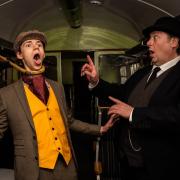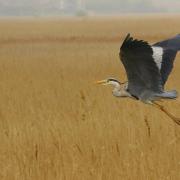As the East Anglian Air Ambulance welcomes the Duke of Cambridge to its ranks, Jilly Hurley talks to one of its Norwich-based pilots about the service.
This year the East Anglian Air Ambulance celebrates its 15th anniversary. From humble beginnings – one helicopter, one paramedic, operating one day a week – the EAAA has blossomed beyond all expectations. Once an organisation largely staffed by kindly medics on a day-off, it is now a professional pre-hospital emergency service with a doctor and critical-care paramedic attending every mission. Previously a part-time service, it now operates seven days a week, 365 days a year, and is at the vanguard of research and clinical practice.
Captain Steve Norris, who flies out of Norwich International Airport, has been a pilot with the charity for more than nine years and has played an important part in the EAAA’s development. Originally from Cleethorpes in north Lincolnshire – now living in Norwich with his wife, Katie, and three-year-old daughter, Josie – Steve began his career in the Army when he was 16, with the 17th/21st Lancers (which later become the Queen’s Royal Lancers). He then spent nine years driving tanks, before being accepted to train as a helicopter pilot with the Army Air Corps in 1992.
“I had wanted to be a pilot for many years, but I didn’t think it would be possible,” explains Steve. “So it’s wonderful to have had a really long and varied flying career in the army – 14 years in all! Much of that time was spent in Wattisham, in Suffolk, but I also spent time in Germany, and later Belize. Flying in the jungle was an incredible experience and was actually good training for the work I do now, as at night we operated as the country’s air ambulance because much of the population lives offshore on tiny islands. Experience in the jungle has also helped me to cope with the many unexpected, fast-moving situations we face on scene with the EAAA.”
Not only is 2015 a significant anniversary for the charity, it is also the year that brings one of the most significant advancements in its history - the arrival of the EC145 T2 helicopter. Much larger than the current aircraft, it can carry enough fuel to fly for more than two hours, with a range of 300 nautical miles (335 miles); and whereas the current helicopter emergency medical service (HEMS) team comprises a pilot, a doctor and a critical-care paramedic, the new helicopter will be able to accommodate two pilots and three HEMS crew, as well as a patient. Extending the reach and effectiveness of the EAAA medical teams enables the charity to play a leading role in training the next generation of pre-hospital clinicians. More space also means that more can be done to help patients during the transfer process.
The first of the new helicopters will be based at Cambridge, but thanks to significant funding from the Libor fines fund, the EAAA will be getting another EC145 T2 in Norwich early next year. Steve is keenly looking forward to its arrival, because it will transform the capability of the service: “We could fly to the scene, take a patient to Addenbrooke’s, and then be re-tasked to, say, the Norfolk coast for another mission – all on a single tank of fuel. The new aircraft would also enhance the treatment of patients, at the scene and in-flight.”
Steve still looks forward to coming to work, even after nearly a decade in the job. But he emphasises that going home at night is very satisfying too: “It can be a very intense and long shift sometimes; but it is a wonderful thing to end a day’s work knowing that you’ve made a difference to someone’s life.” ?



























